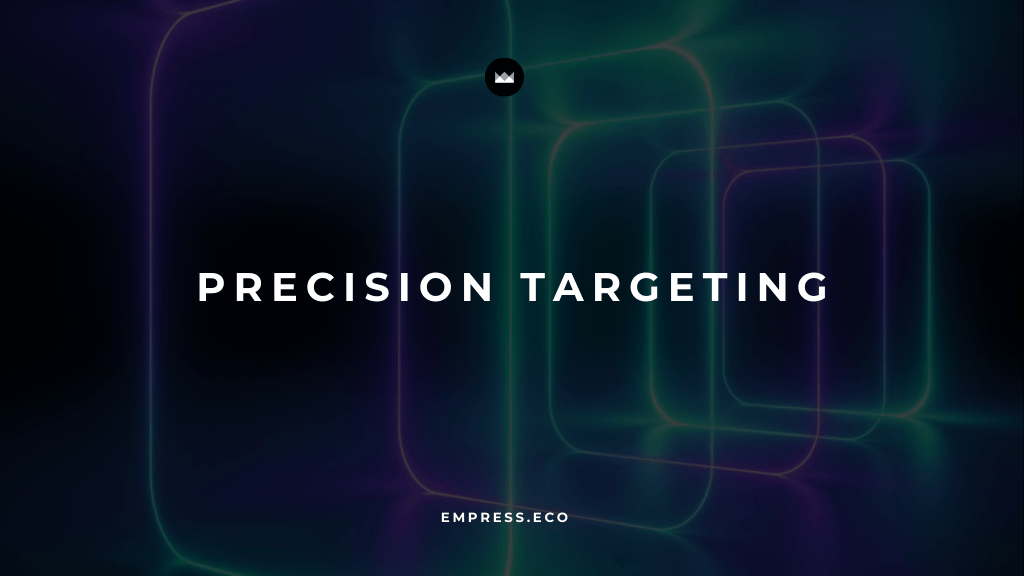
Precision Targeting: The Key to High-Quality Leads
Table of Contents
In the dynamic world of modern marketing, precision targeting has emerged as a game-changer. By leveraging data and advanced analytics, businesses can identify and engage their ideal audience with unparalleled accuracy. This blog explores the strategies and benefits of precision targeting, highlighting how it can transform lead generation and drive business success.
Understanding Precision Targeting
Precision targeting refers to the strategic approach of using detailed customer data to create highly targeted marketing campaigns. This method focuses on specific audience segments based on interests, demographics, behaviors, and location, ensuring that marketing efforts resonate with the intended recipients .
The Benefits of Precision Targeting
Precision targeting offers several advantages that make it a powerful tool for businesses:
- Increased Efficiency: By focusing resources on the most promising leads, businesses can avoid wasting money on broad, ineffective advertising .
- Higher Conversion Rates: Tailored messages that speak directly to a specific audience are more likely to engage and convert, leading to improved ROI .
- Enhanced Customer Insights: The data gathered from precision targeting provides valuable insights into customer preferences and behaviors, enabling continuous optimization of marketing strategies .
- Personalized Customer Experience: Precision targeting allows for a personalized approach, fostering loyalty and trust among consumers .
Key Strategies for Precision Targeting
To effectively implement precision targeting, businesses should consider the following strategies:
Leveraging Data Analytics
Advanced data analytics is the cornerstone of precision targeting. By analyzing vast amounts of customer data, businesses can identify patterns and trends that inform their targeting efforts. This includes using predictive analytics to forecast future behaviors and segmenting audiences based on detailed profiles .
Steps to Leverage Data Analytics:
- Data Collection: Gather comprehensive data from various sources, including website interactions, social media activity, and purchase history.
- Analysis: Use analytical tools to identify trends and patterns in the data.
- Segmentation: Divide your audience into distinct segments based on the insights gained.
- Implementation: Tailor marketing campaigns to target each segment specifically.
Example:A retail company uses data analytics to identify that a segment of its customers frequently purchases eco-friendly products. By targeting this segment with personalized ads for their new line of sustainable goods, the company saw a 20% increase in sales from this group.
Utilizing Programmatic Advertising
Programmatic advertising automates the buying and placement of ads, allowing for real-time targeting and optimization. This technology enables businesses to deliver personalized ads to specific audience segments, improving the efficiency and effectiveness of their campaigns .
Benefits of Programmatic Advertising:
- Real-Time Bidding: Automatically bid for ad space in real-time, ensuring your ads appear to the right audience at the right time.
- Personalization: Deliver ads tailored to the viewer’s interests and behavior.
- Efficiency: Reduce manual workload and increase the speed of ad placements.
Case Study:A tech startup used programmatic advertising to target young professionals interested in innovation and technology. By delivering personalized ads showcasing their cutting-edge products, the startup experienced a significant boost in brand awareness and customer acquisition.
Implementing Radius Marketing
Radius marketing targets consumers within a specific geographic area. This approach is particularly effective for local businesses looking to attract nearby customers. By focusing on a defined radius, businesses can tailor their marketing efforts to the unique needs and preferences of their local audience .
Steps to Implement Radius Marketing:
- Define Your Radius: Determine the geographic area you want to target.
- Analyze Local Data: Understand the demographics and preferences of the people within this area.
- Tailor Your Message: Craft marketing messages that resonate with the local audience.
- Local Advertising: Use local media channels and platforms to reach your audience.
Example:A new restaurant in a bustling city center used radius marketing to target office workers within a one-mile radius. By offering lunch specials and promoting them through local social media groups, the restaurant quickly built a loyal customer base among nearby professionals.
Crafting Personalized Content
Personalization goes beyond just addressing customers by their first names. It involves creating content that aligns with the values, interests, and pain points of the target audience. Personalized content is more likely to resonate with consumers, driving higher engagement and conversion rates .
How to Craft Personalized Content:
- Understand Your Audience: Use data to gain insights into your audience’s preferences and behaviors.
- Segment Your Content: Create different types of content for different audience segments.
- Use Personalized Messaging: Address the specific needs and interests of each segment in your messaging.
- Test and Optimize: Continuously test different content strategies and optimize based on performance data.
Case Study:A beauty brand segmented its audience into skincare enthusiasts, makeup lovers, and natural product fans. By crafting personalized content for each group and addressing their unique interests and concerns, the brand saw a substantial increase in engagement and sales.
Overcoming Challenges in Precision Targeting
While precision targeting offers numerous benefits, it also comes with challenges:
Data Privacy and Ethics
Marketers must navigate privacy concerns and ensure compliance with data protection regulations such as GDPR. Ethical use of consumer data is crucial to maintaining trust and avoiding legal issues .
Best Practices for Data Privacy:
- Transparency: Clearly communicate how you collect and use customer data.
- Consent Management: Ensure you have explicit consent from customers before using their data.
- Data Security: Implement robust security measures to protect customer data.
Example:A financial services firm ensures compliance with GDPR by using a consent management platform to obtain and manage customer consent. They also provide transparent communication about how customer data is used, which has helped build trust and avoid legal issues.
Data Quality
Ensuring accurate and up-to-date data is essential for effective targeting. Businesses must prioritize data cleansing and enrichment to maintain the integrity of their databases .
Strategies for Maintaining Data Quality:
- Regular Data Audits: Conduct periodic audits to identify and correct inaccuracies in your database.
- Data Enrichment: Supplement your data with additional information to provide a more complete picture of your customers.
- Use Reliable Sources: Ensure that the data you collect comes from reliable and accurate sources.
Example:A healthcare provider regularly audits its patient database to ensure the information is accurate and up-to-date. They also use third-party data enrichment services to enhance their records, which has improved their ability to target and engage patients effectively.
Balancing Targeting and Broad Reach
While precision targeting focuses on specific segments, businesses should be mindful not to alienate other potential customer groups. A balanced approach that combines targeted and broad strategies can help maximize reach and impact .
Approach to Balancing Targeting and Broad Reach:
- Integrated Campaigns: Combine targeted campaigns with broader marketing efforts to reach a wider audience.
- Diverse Content: Create a variety of content types that appeal to different segments of your audience.
- Continuous Monitoring: Monitor the performance of both targeted and broad campaigns to ensure they are working together effectively.
Example:A national retailer uses precision targeting for specific product lines while maintaining broad advertising campaigns to attract a general audience. This balanced approach has allowed them to maximize their reach and impact across different customer segments.
Case Studies: Success Stories of Precision Targeting
Nike's Women's Campaign
Nike's precision targeting strategy successfully tapped into the growing market of female athletes. Their campaigns emphasized empowerment and inclusivity, resonating strongly with their female audience and driving significant engagement and sales .
Key Elements:
- Empowerment Messaging: Focused on themes of strength and empowerment.
- Targeted Content: Created content specifically for female athletes.
- Multiple Channels: Used social media, video ads, and influencer partnerships to reach their audience.
Tesla's Tech Enthusiasts
Tesla strategically targeted tech enthusiasts by emphasizing innovation, sustainability, and cutting-edge technology. This approach aligned perfectly with the interests of their tech-savvy audience, fostering strong brand loyalty and driving sales .
Key Elements:
- Innovation Focus: Highlighted the innovative features of their vehicles.
- Sustainability Messaging: Emphasized their commitment to sustainability.
- Community Engagement: Engaged with tech communities through events and online forums.
Conclusion
Precision targeting represents a paradigm shift in marketing, moving from broad-brush approaches to finely-tuned strategies that deliver the right message to the right person at the right time. By leveraging data analytics, programmatic advertising, radius marketing, and personalized content, businesses can enhance their lead generation efforts and achieve higher conversion rates. As the marketing landscape continues to evolve, precision targeting will remain a fundamental strategy for businesses aiming to connect with their ideal audience and drive sustained success.
Empress Newsletter
Join the newsletter to receive the latest updates in your inbox.



